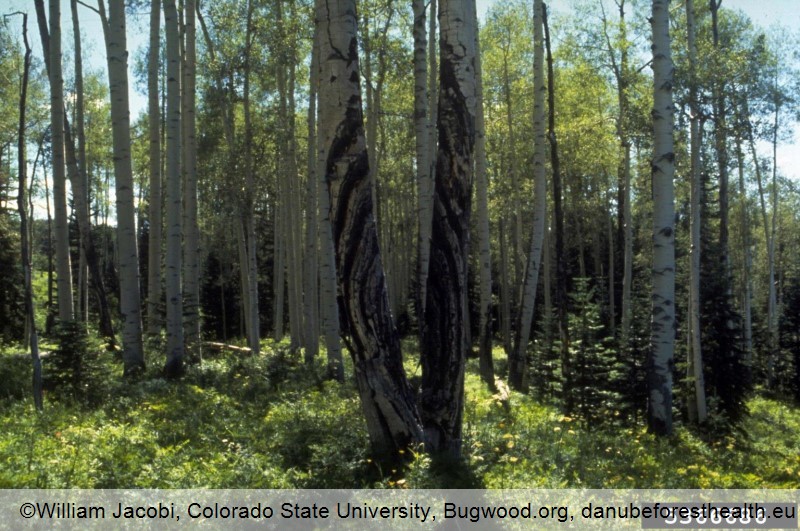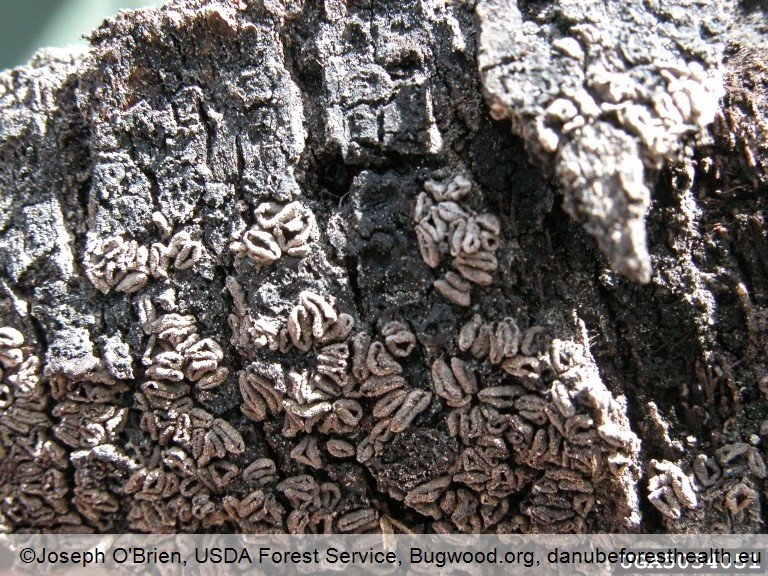Fungi
Sooty-bark canker of poplars
Sclerencoelia pruinosa
Thomas Cech
|
|

Fig. 1. Sooty bark disease of poplars: stems with black discoloration

Fig. 2. Fruiting bodies (apothecia) of Sclerencoelia pruinosa in dry condition (rolled margins)
DETECTION PERIOD:
all seasons
DESCRIPTION:
The pathogen causes rapidly growing cankers on the stem (up to 1m in length in one season). Initially sunken lesions appear revealing dark inner bark layers and cambium. The outer bark is then detached but the black layers stay attached to the wood giving the whole trunk the sooty appearance. Further growth of the canker results in a rough zonation (Fig. 1). Wound callusing around the cankers is missing or weak. Fruiting bodies of the fungus appear on the black stained layer as thousands of small discs (apothecia), which are grey and shrunken (rims rolled inward in dry condition, but in moist condition showing a brown surface with a slightly lighter and rough; see Fig.2).
HABITAT:
On Populus tremuloides, P. grandidentata and P. balsamifera in Northern America; probably on Populus tremula in Europe; in natural habitats, nurseries, plantations and urban areas.
STATUS:
The species is not known from Europe except for two confirmed records (Norway and Sweden, 19th century).
IMPACT:
In North America this species causes a severe and widespread disease of Trembling aspen, resulting in the death of the trees due to girdling of the stems.
SIMILAR SPECIES:
Sclerencoelia fascicularis occurring on poplars also in Europe, however with fasciculate apothecia (fruiting bodies arranged in dense groups, Fig.3).
|